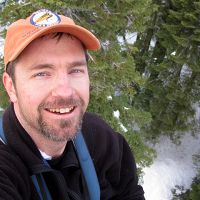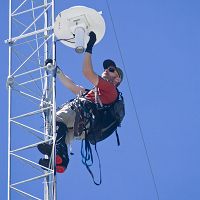Hartsough et al., 2012
Paired tree and soil instrumentation: what can we learn from two instrumented sites across various gradients in a forested catchment
Hartsough, P.C., Roudneva, E., Malazian, A.I., Meadows, M.W., Bales, R.C., and Hopmans, J.W. (2012)
Fall meeting, American Geophysical Union, December 2012. Abstract H31G-1211.
-
Sierra, INVESTIGATOR
-
Sierra, STAFF, UNDERGRAD
-
Sierra, GRAD STUDENT
-
Sierra, STAFF
-
Sierra, INVESTIGATOR
-
Sierra, COLLABORATOR
Abstract
Extensive instrumentation both below and above ground across a forested catchment in the Southern Sierra Critical Zone Observatory (SSCZO) within the Kings River Experimental Watershed (KREW) begins to untangle the complex relationship between precipitation, water storage and transpiration as it relates to water availability from deeper sources. The first instrumented site (CZT-1) includes a White Fir (Abies concolor) situated on a flat ridge with access to deep soil moisture. Monitoring and modeling of shallow and deep soil regions confirm that there is significant soil water available from 100-400cm as the tree exhausts water from shallower depths. A root excavation and limited drilling show roots distributed from 30-150cm with limited roots available to access deeper soil water and water stored in the saprolite. At a second instrumented site, CZT-2, a Ponderosa Pine (Pinus ponderosa) was instrumented with a similar suite of sap flow and soil sensors. The CZT-2 site is on a slight slope and is characterized by shallow soils (<90cm) with extensive cobbles and bedrock outcrops with limited access to deeper soil or saprolite water. The second site also sits in the open while the first site is more protected in a closed forest. The two sites show different responses to changes in rain and snow loading from above as well as soil drainage and water depletion from below across a wet to dry transition. They also have different thresholds for transpiration shut down both due to late season water deficit and also during winter periods where air temperatures are high enough to permit photosynthesis. Sap flux and extensive soil water content and water potential measurements around both trees as well as evapotranspiration measurements from a 50m flux tower located adjacent to the two instrumented trees, show little water limitation during wet years and only moderate water limitation during a drought year. Access to deeper water storage pools is confirmed by modeling results across the soil/tree/atmosphere continuum.
http://hartsough.lawr.ucdavis.edu/
Citation
Hartsough, P.C., Roudneva, E., Malazian, A.I., Meadows, M.W., Bales, R.C., and Hopmans, J.W. (2012): Paired tree and soil instrumentation: what can we learn from two instrumented sites across various gradients in a forested catchment. Fall meeting, American Geophysical Union, December 2012. Abstract H31G-1211..
Associated Data
Critical Zone Tree 2 - Soil Moisture, Soil Temperature, Electrical Conductivity, Matric Potential, Sap Flow (2010-2012)
11 components •
Providence Creek Headwater Catchments (1660 - 2115 m elevation) •
Hydrology, Biology / Ecology •
Peter Hartsough; Jan Hopmans
Explore Further





